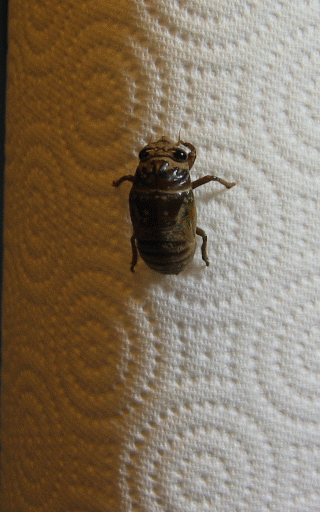| Rose Chafer Beetle Cetonia aurata
http://www.nhm.ac.uk/nature-online/species-of-the-day/collections/our-collections/cetonia-aurata/index.html
|
There is a quirky tradition in the organismal biology community whereby newly discovered species are named after famous people.
Due to the overwhelming variety and the vast number of species that have yet to be discovered, it isn't surprising that a large portion of these creatively named creatures are in fact
insects!
Over the years, insects have been named for actors and actresses (Charlie Chaplin, Harrison Ford, Kate Winslet, Liv Tyler, Arnold Schwarzenegger), political figures (Abraham Lincoln, George W. Bush, Benjamin Franklin, Adolf Hitler, Arnold Schwarzenegger), musical acts (rock bands and divas alike), philosophers, literary figures, composers, talk show hosts (Hi Ellen!)...if a profession has ever had any amount of power or prestige attached to it, it's included in this list.
The full list of organisms named after famous people can be found here. Notable non-insect entries include a rabbit species named after Hugh Hefner and five trilobites named for each individual member of the Sex Pistols. Below are some of the more creative celebrity-insect namesakes.
| Aleiodes shakirae http://de.wikipedia.org/wiki/Aleiodes_shakirae |
Insect: Wasp
Namesake: Shakira
Fun fact: "Since parasitism by this
species causes the host caterpillar to bend and twist its abdomen in various
ways, and Shakira is also famous for her belly-dancing, the name seems
particularly appropriate."
| Preseucoila imallshookupis http://www.greenerideal.com/lifestyle/entertainment/0126-celebrities-namesake-creatures/ |
Insect: Wasp
Namesake: Elvis Presley
Fun fact: The specific name is
derived from the song "All Shook Up" recorded by Elvis
| Nanocthulhu lovecrafti http://www.waspweb.org/Cynipoidea/Figitidae/Eucoilinae/Nanocthulhu/Nanocthuhlu_lovecrafti.htm |
Insect: Wasp
Namesake: H. P. Lovecraft
Fun fact: The genus name invokes
Lovecraft's character Cthulu
| Liturgusa algorei http://www.latimes.com/science/sciencenow/ la-sci-sn-praying-mantis-bark-photo-gallery-20-001-photo.html |
Insect: Mantis
Namesake: Al Gore
Fun fact: Named for Gore's "environmental activism including his efforts to
raise public awareness of global climate change."
| Scaptia
beyonceae http://www.nbcnews.com/id/45990587/ns/technology_and_science-science/t/ bootylicious-horse-fly-bling-named-after-beyonce/#.VG4OhYvF9B8 |
Insect: Fly
Namesake: Beyoncé Knowles
Fun fact: The horse fly was named
after the singer and actress because of its striking golden behind.
Honorable Mention: Campsicnemus charliechaplini, named for Charlie Chaplin because it dies with its midlegs in a bandy-legged position.













